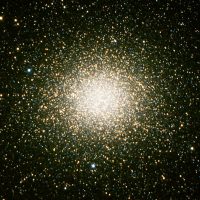Our next club dark sky star party will be June 1st at the usual Kaʻohe site.
For the evening I have again assembled an observing list for those who want to explore some of the more interesting objects available in the sky this month.
These are all visible in the early evening, all suitable for average telescopes of at least 6-8″ aperture.
M5
RA: 15h 18′ Dec: 2° 4’N Mag: 5.8 Globular cluster in Ser
A nice bright globular, about 15′ in diameter
Iota Cnc
RA: 8h 46′ Dec: 28° 46’N Binary star in Cnc
A pretty yellow and white pair, 4.0 and 6.6 separated by 30″
V Hya
RA: 10h 52′ Dec: 21° 15’S Mag: 8 Carbon star
Reddest carbon star known variable from 6.5-12 magnitude with a period of 533 days
M92
RA: 17h 17′ Dec: 43° 8’N Mag: 6.5 Globular cluster in Her
This nice globular cluster is often overlooked in favor of its more famous neighbor M13, but M92 is also worth the stop.
NGC6207
RA: 16h 43′ Dec:36° 50’N Mag: 11.6 Galaxy in Her
Just 28′ north of M13 this faint 11th magnitude galaxy is a nice challenge object for eight inch or larger optics.
NGC5846
RA: 15h 6′ 29.3″ Dec: 1° 36′ 20″N Mag: 10.2 Galaxy in Vir
A bright elliptical, those with larger aperture may note a small companion galaxy on the south edge of the halo
M99 Coma Pinwheel Galaxy
RA: 12h 18′ 49.7″ Dec: 14° 24′ 59″N Mag: 9.8 Galaxy in Com
A nice spiral galaxy, larger aperture will show some of the spiral structure
NGC5128 Centaurus A
RA: 13h 25′ Dec: 43° 1’S Mag: 7 Galaxy in Cen
A large bright galaxy with an obvious dust lane
Proxima Cen
RA: 14h 29′ 43″ Dec:62° 40′ 46″S Red dwarf star
The closest star outside our solar system, a challenge object to be sure, you will want good charts to find this one. The coordinates given above are from the Gaia mission data release 2 and are recent enough to be accurate, this high proper motion star moves about 4 arcseconds each year.
NGC5286
RA: 13h 46′ Dec: 51° 22’S Mag:7.6 Globular in Cen
Another nice, but oft overlooked globular star cluster
Keep in mind that this list is assembled for the usual West Hawaii Astronomy Club observing site at Kaʻohe, on the side of Mauna Kea at 20N latitude. It may include southern objects out of reach for anyone much further north.


